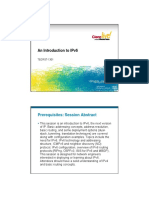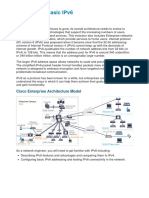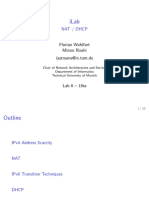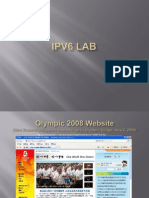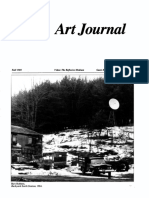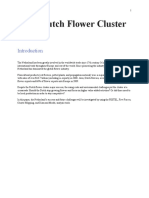System administration consequences of the endgame of IPv4 and deployment of IPv6
Glen Turner linux.conf.au 2009 Sysadmin miniconf 2009-01-20 Hobart, Australia
www.gdt.id.au Private citizen (does not necessarily reflect the views of my employer, whomever that may be)
�ISO model, amended for reality
Actual issues
Political Financial Application Presentation Session Transport Network Link Physical
Technical issues
�Part 1 Address exhaustion
�IPv4 addresses
Are a limited resource Are about to become scarce as the pool of unallocated IPv4 addresses empties
Ref: www.potaroo.net/tools/ipv4
�Plan A, circa 1994
IPv6 to replace IPv4 Well prior to IPv4 address exhaustion A migration from IPv4 to IPv6
�Plan A, circa 2008
It is now clear the original optimistic IPv6 deployment plans have failed Craig Labovitz
asert.arbornetworks.com/2008/08/the-end-is-near-but-is-ipv6
�Plan B
Carrier-class NAT The ISP runs real addresses to transit and peering links, NATed addresses to retail customers NAT in the ISP's distribution layer of routers Even NAT addresses within the ISP are not unique (lots of ISPs have more than 10.0.0.0/8 of customers)
�Plan B sometimes breaks IPv4
No more end-to-end address visibility In reality this has been broken for quite some time
Can you run a globally-visible web server from your laptop?
But now breaks the end-to-end nature of the Internet to the customer site
Can you run a globally-visible web server from your ADSL router?
�How does NAT work?
Inspect outgoing traffic
Collect (src_addr, src_port, dst_addr, dst_port)
Re-write src_addr to my exterior interface, find an unused source port on my exterior interface and re-write src_port to that Record these addresses and ports in the expectation table
(150.101.30.33, 20000, 202.158.201.38, 80) (10.1.1.1, 10000, 202.158.201.38, 80) (150.101.30.33, 20000, 10.1.1.1, 10000, 202.158.201.38, 80)
�How does NAT work?
Inspect incoming traffic Is the incoming (src_addr, src_port, dst_addr, dst_port) in the expectation table? Re-write the dst_addr and dst_port to the original values in the table
(202.158.201.33, 80 150.101.30.33, 20000)
(202.158.201.38, 80 10.1.1.1, 10000) (150.101.30.33, 20000, 10.1.1.1, 10000, 202.158.201.38, 80)
�Wrinkles with NAT
Some protocols embed IPv4 addresses
These need to be rewritten too May be complex and thus dangerous to do in the forwarding plane
eg: SNMP uses ASN.1 encoding
Some protocols embed forthcoming connection information
FTP, Cisco Skinny, a lot of multimedia
These wrinkles are handled by NAT modules
inspect the traffic, add entries to the expectation table
�Problems with NAT
Complex
Forwarding plane moves from ASIC to CPU Some packets need a lot more work than others Complex code, so errors certain Abundant opportunity for resource exhaustion Some traffic simply isn't suitable: low-power devices, sensors, episodic multimedia
Jitter and complexity attacks
Exploits of code with errors
Huge amounts of state
Timeouts
�Overlay networks
NAT leads to all finding each other applications deploying overlay networks You can view STUN and the like as attempts to generalise these
But generalised solutions are remarkably like onion routers, and thus attract misuse But latency is the performance issue Gamers will love IPv6
Overlay networks do not follow the topology
�Consumers and carrier-class NAT
The consumer is forced to take a hosting service, since they can no longer host services themselves
Innovation. You can't buy services that haven't been invented yet Pricing. No competition Part of the reason for the popularity of Picassa, Flickr, YouTube rather than hosting the content on your own machine
Again, this has been happening for some time
�Return of the Walled Garden?
The ISP can control which hosting services are used And can force the use of their own expensive services
Eg: carrier does not NAT H.323 and SIP, but places H.323 gatekeepers and SIP proxies on its network for its services. Regulators are told that this is necessary to preserve the reliability of telephony.
�Results of scarcity
A market for IPv4 addresses
Address holders are sellers ISPs and colo providers are purchasers Poor record-keeping of large historical allocations ISP contracts lack clarity on this point Lots of registry entries are unsecured or have outdated contacts
Who owns IPv4 address allocations?
Ample scope for fraud
�Results of scarcity on ISPs
Ownership versus control
Does it matter if you own an address if a backbone ISPs insist otherwise? As address allocations are sliced and diced to use every last IPv4 address
Routing and forwarding tables size explodes
�Security of retained IPv4 addresses
Real IPv4 addresses are precious. They are the resource necessary if two NATed clients are to find each other
For videoconferencing For peer-to-peer For evil purposes
Real IPv4 hosts become the worthwhile target
�Summary
The Internet is going to change for IPv4 from 2010. IPv4 will continue, but not as we know it The underutilised, barely deployed IPv6 is the only way to retain the status quo That is, the killer application of IPv6 is Internet access; technically, the end-to-end visibility of Internet addresses No one is going to make any money from IPv6 Simon Hackett, Internode
�Part 2 IPv6 Basics
�Design goals
A bug fix release
Larger addresses Automated configuration Default route failover Security QoS
Security and QoS were back-ported to IPv4 and are substantial topics by themselves
IPsec DiffServ
�IPv6 builds on IPv4
Apart from the bug fixes, everything you know about IPv4 works with IPv6 But IPv6 is a different protocol
Its own address family
inet6 ip -family inet6 route list OSPFv3, extensions to BGP
Its own forwarding tables
Its own routing
�Larger addresses
IPv6 addresses are 128 bits Like IPv4 these addresses consist of three parts
Network Subnet Host
ISPs are allocated a /40, they give /48s to customers
�New address syntax
2001:388:a001:1:217:f2ff:feca:792e/64
2001:388:a001::/48 :1:217::/64 :f2ff:feca:792e/128
Site allocation Subnet Host
Leading zeros are omitted :: is used to represent a run of :0: You can give a IPv4 dotted-quad address in the last 32 bits
�Special addresses
::/128 ::1/128 fe80::/10 ff00::/8 ::ffff:1.2.3.4 2001:db8::/32 ::/0 Unassigned Loopback Link scope Multicast IPv4 in IPv6 Documentation Default route
�Larger addresses allow autoconf
The EUI-64 IPv6 address format uses the lowest 64 bits to hold the interface's MAC address Leaving the middle 16 bits for subnetting a site
Which the site can in turn split up for area aggregation, as with IPv4
So the host part of the address is known from the MAC address How do we find the network and subnet parts of the address?
�Router advertisement
Router advertisments are send by routers periodically and upon request They contain
The method for address determination The address prefix and length The default router address They provide redundant default routes
Multiple announcements are fine
�Router advertisement
Linux uses radvd Configured from /etc/radvd.conf
interface eth0 { AdvSendAdvert on; MinRtrAdvInterval 3; MaxRtrAdvInterval 10; prefix 2001:388:a001:1::/64 { AdvOnLink on; AdvAutonomous on; AdvRouterAddr on; }; };
�Multiple addresses
IPv6 interfaces are used to holding down multiple addresses This was originally intended as a migration measure for moving from one ISP's addresses to another, but it is useful for more than that
$ ip addr show 1: eth0: <BROADCAST,MULTICAST,UP,LOWER_UP> mtu 1500 qdisc pfifo_fast state UP qlen 1000 link/ether 00:17:f2:ca:79:2e brd ff:ff:ff:ff:ff:ff inet 169.222.10.27/22 brd 169.222.11.255 scope global eth0 inet6 2001:388:a001:1:217:f2ff:feca:792e/64 scope global dynamic valid_lft 2579159sec preferred_lft 591959sec inet6 2001:388:d000:d00:217:f2ff:feca:792e/64 scope global dynamic valid_lft 2577683sec preferred_lft 590483sec inet6 fe80::217:f2ff:feca:792e/64 scope link valid_lft forever preferred_lft forever
�Remove poor ideas
IPv4 packet fragmentation
Could be totally removed if links simply sent back the size of packets they support
Routers don't need to fragment Hosts don't need to guess, thus using a smaller packet size than needed
Blocking ICMP6 packets is a really poor idea Does do anything of value 64KB is looking too small for fast links
Identifier
Small packets
�Remove poor ideas
Simplify option handling Single default route
The host listens to Router Advertisements and can select the best of them, but use the next best upon a failure IPv4 hack is VRRP Interfaces hold multiple IPv6 addresses
Assumption of a single IP address per interface
�DNS
A new record type
www.example.org. IN AAAA 2001:388:1:4001:20a:e4ff:fe0d:be04
The reverse uses PTR, to a different domain
4.0.e.b.d.0.e.f.f.f.4.e.a.0.2.0.1.0.0.4.1.0.0.0.8.8.3.0.1.0.0.2.ip6.arpa. IN PTR www.example.org.
Using autoconfigured addresses for well-known services is not a good idea what if the MAC address changes?
�DNS and services
Let each machine have a autoconfigured address, use that for machine-related things Give each service on that machine its own address too
www.example.org. IN AAAA 2001:388:1:4001:20a::101
This allows the MAC address to change without needing to update the DNS for public services A lot of applications software lacks a bind configuration option
�DNS and autoconfiguration
Static DNS entries and IPv6 autoconfiguration don't really mix Dynamic DNS is the answer Also saves a huge amount of typing
�DNS
DNS does the migration magic When a host has a global scope IPv6 address on a running interface it queries for a AAAA record prior to a A record
These queries can be transported over IPv4
�Part 3 IPv6 Deployment
�1. Paperwork
Allocate IPv6 prefix Develop addressing plan
Lay IPv6 design over IPv4 design There are 16 bits for subnetting, use the top 4 or so for site aggregation, leaving about 12 for subnets per site Allocate a /64 per leaf subnet
�2. Link to ISP
Configure a IPv6 address and routing on existing ISP link
copying design from IPv4
Static routing or BGP, depending upon site and ISP requirements Create or inject interior default route
�3. Activate IPv6 on backbone
This brings the first problem: the poor quality of IPv6 support on some firewalls and other middleboxes Don't use EUI-64, but be compatible
�4. Establish networking servers
Unless good reason otherwise use autoconfiguration (EUI-64 addressing) with stateless DHCP Stateless DHCP provides DNS and NTP server addresses
These will be IPv4 addresses, because of Windows Xp
Use Dynamic DNS for the average host If you plan on IPv6-only devices then use an anycast IPv6 server on the well-known addresses
�5. Find a sucker early adopter
Computing hobbyists, ourselves System administrators
�6. Transition public-facing services
Web, e-mail, Issue: Microsoft Exchange 2003 Decision: EUI-64 or fixed address in the /64
�7. Transition the masses
Issue: people how travel to other sites which have IPv6 configured but no connectivity Issue: another round of fighting with middlerubbish such as VPN servers and clients Issue: accounting
�8. Transition inward-facing services
Problem: disconnect between network engineering and applications
Upgrade cycle of interior applications Convincing applications programmers that the work is necessary, a hard task since they are being asked to learn something new Package upgrades
Disruption Money
�9. Finish the job
Delegation using IPv6 to DNS servers
Not available to edu.au
Activate equivalent IPv6 features on switches as used on IPv4
To prevent address spoofing and so on
Be careful not to deploy services which really only make sense for IPv4
VRRP
Monitoring systems
�Deployment technical issue
36% 23% 18% 17% 17% 14% 4% 2% 2% Cost, time, business case Vendor support, back-office Knowledge, education User demand Upstream transit Dual-stack interoperability Multihoming Allocation policy Performance
�Trickle down effect
ISP can deploy IPv6 in a month
Only some equipment doesn't work Only some software doesn't work
Sysadmins can deploy IPv6 in a quarter
Applications programmers may have one outage period per year
Almost no bespoke software works Upgrading an application is very different to upgrading server software
�Tunnel broker and opportunistic
AARNet runs a tunnel broker: IPv6 connectivity for testing purposes
broker.aarnet.edu.au Gain experience with IPv6 Test equipment and applications with Ipv6
Use it in advance of native IPv6 connectivity to
Plagued by mystery authentication issue
We are not going to solve this, we'll rip and replace the box with a more modern Hexago broker
�Issue: Textual representation
Addresses are longer :-) And in a different address family ipv4:1.2.3.4 ipv6:::ffff:1.2.3.4 IPv6 is the only network address without a regular form
IPv4 AppleTalk IPX DECnet 1.2.3.4 12345.67:890 12345678 00aabbccddeeff 1.2345
So you are looking at rewriting functions rather than adding a one-liner
�Issue: Security
Hosts
Not all firewall products understand IPv6, even when the host is running IPv6. You can guess the OS. It's a second protocol
Routers
ipv6 routing line vty 0 4 ip access-group VTY-LIST ip access-group VTY-LIST6
The real problem is support in corporate firewalls
And upgrade plans for those firewalls
�Issue: Monitoring
How a connection works:
Do I have a global address on default route interface? Yes, look up DNS name using AAAA
Present, use that IPv6 address Absent, try to look up the A record
No, try to look up the A record Got a AAAA, try for IPv6 connection Got a A, try for IPv4 connection IPv6 traffic dies, IPv4-based monitoring system says all well
What happens if we have a black hole on IPv6?
�Issue: Reality of corporate networks
Inadequate
Configuration control Monitoring Change control Lab scenarios Configuration changes induce fear IPv6 changes the sense of firewall rules: match against lower /64
Firewalls are the new voodoo
::1 to ::ff Network ::ff00 to ::ffff Servers ::1234:1234:1243:1234 Autoconfed MAC
�Issue: Accounting systems
Traffic accounting systems are not used to dealing with addresses as dynamic as IPv6 addresses
�Issue: Enterprise switches
Enterprise switches do a lot more than just bridge
Snoop DHCP requests and enforce allocations
Look for parallel features under IPv6
�Issue: Windows Xp
Needs an activation command
ipv6 install
Can only use a IPv4 DNS forwarder, so can't operate in a IPv6-only environment Linux, MacOS and Windows Vista all have IPv6 switched on
�Issue: Training
University computer science courses hardly never show students an IPv6 address TAFE ditto Vendor training (MSCE, RHCE) ditto
�Summary
IPv4, as we know it today, is ending NAT is the obvious way forward IPv6 offers a solution to the economic and technical problems with NAT, but has little deployment IPv6 can be deployed quickly by ISPs Both IPv4 NAT and a rapid IPv6 deployment leaves sysadmins holding the baby
Revenge for the BOFH
�System administration consequences of the endgame of IPv4 and deployment of IPv6
Glen Turner
www.gdt.id.au/~gdt/presentations/2008-01-20-linuxconfau-ipv6/
Copyright Glen David Turner of Semaphore, South Australia, 2009. Licensed to you under the GNU Free Documentation License v1.3.










